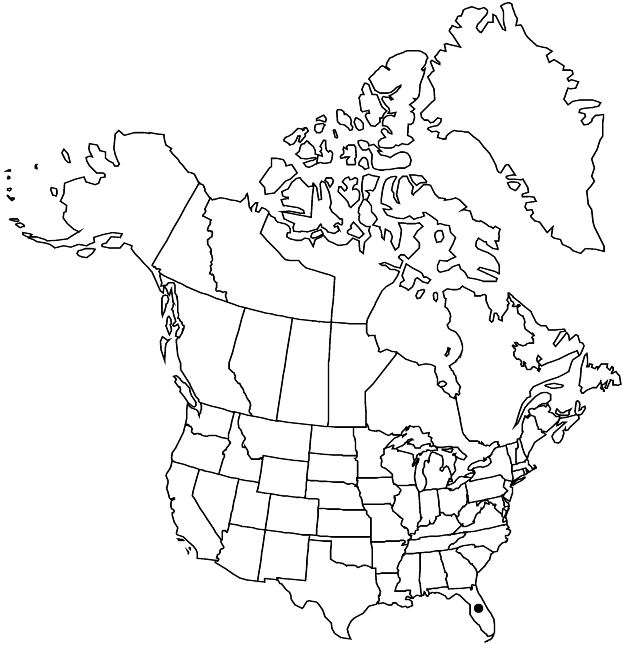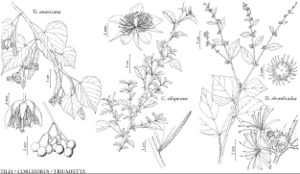Corchorus siliquosus
Sp. Pl. 1: 529. 1753.
Plants herbs, annual. Stems erect, 3–25 dm, short-pilose in 1(–2) lines, hairs erect, dense, sharp-pointed. Leaves: petiole 5–10 mm; blade elliptic-ovate, 0.5–2.5(–4) cm, base rounded-truncate, margins serrate, proximal teeth not prolonged, apex acute, surfaces glabrous, adaxial surface minutely pustulate-roughened. Inflorescences usually solitary flowers, sometimes fasciculate or cymose, 2–3-flowered. Pedicels 4–7 mm. Flowers: sepals narrowly oblong-lanceolate, 4–5 mm, not awned, glabrous; petals 4–6 mm; stamens 50–70. Capsules cylindric, flattened, not wing-angled, subtruncate distally, 2-valved, each valve with 2 awns 1.5–3 mm, 20–30(–60) × 2–3 mm, minutely hirtellous to hispidulous. 2n = 28.
Phenology: Flowering Mar–Oct(–Dec).
Habitat: Canal banks, glade edges, hammocks, hammock and swamp edges, beaches, open pine woodlands with limestone outcrops and solution holes, rock outcrops, roadsides
Elevation: 0–50 m
Distribution

Fla., Mexico, West Indies, Central America, South America.
Discussion
Corchorus siliquosus is native in Collier, Miami-Dade, and Monroe counties. Reports of it from Alabama have been based on a garden-grown plant from Mobile County, and attribution to Mississippi has been based on misidentifications of C. hirtus.
Selected References
None.
